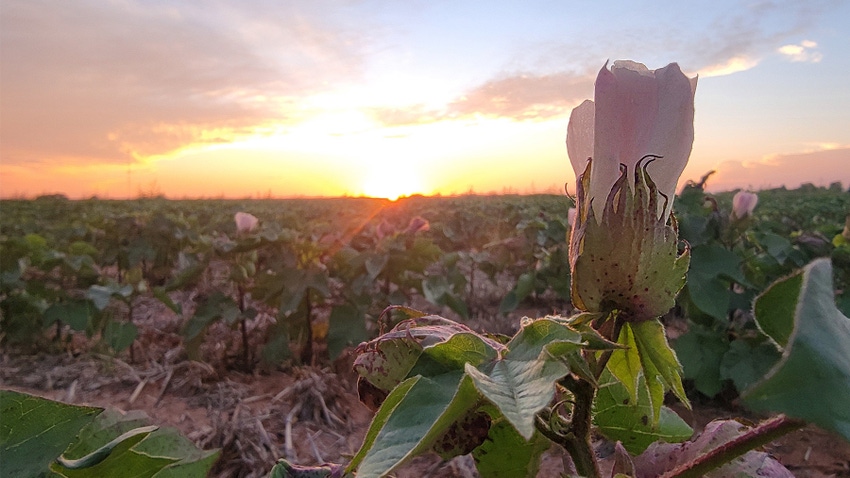
Cotton farmers who have not sourced enough Engenia, Xtendimax, or Tavium to apply to their dicamba-tolerant varieties have other options, says Texas AgriLife Agronomist and Weed Scientist Pete Dotray, Lubbock.
Dotray says after the Arizona federal court vacated the over-the-top dicamba registrations in February he heard a lot of concern from the cotton industry.
“Soon after the vacatur ruling, EPA came out with the existing stock order, which started the initial scrambling to find products. The initial demand seemed greater than in years past,” Dotray says. “But since then, I haven’t heard much. Folks are either satisfied with the product they have, are confident they can still find some, or might still be uncertain as to what they plan to do, although that time is running out.”
He says it’s common for some folks in the area to delay planting decisions until they get a better handle on cotton prices and environmental conditions, especially available moisture.
He adds that under the existing stocks order the vacated labels remain the same and allow applications to be made pre-plant, at-plant, and postemergence through July 30th.
“The only thing that has changed is product availability,” he says.
“I’m also expecting that these approved dicamba products may move from some areas of the state to other areas and even across states from areas with excess product to areas with higher demand. We might not know what is available until application time is right in front of us.”
Good year to rotate
Dotray adds that including other chemistries this year should be a consideration anyway.
“Growers need to be thinking about alternate chemistries considering what appears to be a bit of a shift in some weeds’ ability to tolerate dicamba,” he says. “This is a good time to consider other products to use pre-plant, at-plant, and postemergence with less reliance on dicamba. They might choose to use one less dicamba application and one more residual herbicide to help them finish clean at the end of the year.
“We still have a lot of good herbicides available to aid in cotton weed management regardless of the type of cotton is planted.”
He says Valor (flumioxazin) has become a common input in reduced tillage systems, where they include Valor in their burndown program three to four weeks before planting. “A lot of flumioxazin has already been applied in 2024. Also, dinitroanalines in conventional-till cotton are still an effective treatment whether in a dicamba based system or not.”
Dotray says a movement towards reduced tillage will probably mean fewer yellows being used. “But for those still using conventional tillage, I still feel it’s an important foundational treatment.”
Dotray expects a bit more reliance on Liberty, especially if dicamba is short or if producers have noted a shift in weed response to dicamba.
“Producers still deciding what to plant may consider Enlist cotton or conventional varieties if they are concerned that they can’t get any or enough dicamba.”
Residuals available
He says producers effectively use Gramoxone, 2,4-D and Roundup as effective burndown options and have ample residual herbicides available, including Valor or other flumioxazin-based generics. “Treflan (trifluralin) and Prowl (pendimethalin) are being applied now. At-plant options include Caparol, Cotoran, Diuron, Brake, Prowl, Staple, Dual Magnum, and Warrant. Dual Magnum and Outlook are options as early postemergence applications with dicamba, 2,4-D, Liberty, or Roundup.
“Other products gaining ground are Zidua and Anthem Flex, whether coated on fertilizer or applied as a directed spray. Folks are getting more comfortable with those products, which may take some of the pressure off dicamba or other postemergence products,” Dotray says
He says if these herbicides are activated with irrigation or rainfall, they may hold later emerging weeds until late season, possibly for the rest of the season.
Application timing critical
Timing and product stewardship, Dotray says, are critical components to successful weed management inputs.
“Timing applications to target smaller weeds is crucial for optimal control,” he says. “Residuals have to be applied before the weeds are up.”
He says growers have become more aware of product stewardship, paying closer attention to the environmental conditions at application. “We’ve been emphasizing the importance of on-target applications for years. I think folks are paying closer attention to wind speed and direction and susceptible vegetation downwind, conditions when temperature inversions may be present, and the importance of nozzle selection and boom height. This morning I saw several spraying options occurring when the daily wind speeds were lowest.
“I think there is a lot more pressure and expectations that applications be made under the appropriate conditions.
Pursuing new dicamba label
Dotray says the future of dicamba use on tolerant cotton remains uncertain, but efforts are underway to get a new label.
“Bayer has submitted a new XtendiMax label for 2025. They are hoping to stay in the game. I don't know the details of that label, but it’s likely different than the label that was vacated. There may be few options for applications, but it will at least allow some use of an effective herbicide.”
He says when a new label could be approved is a big unknown, but it could be as early as the 2025 planting season. “Or we may not see that label until partway through the season or later.”
In the meantime, Dotray says planting conditions look better than in the last two years. “We’re off to a decent start in many places. In my vast travels to county programs this spring, there were a lot more green wheat fields than I saw in 2022 and 2023. Planting will start as soon as the soil warms up a bit more and we are hopeful to get more spring and summer rains.”
Read more about:
DicambaAbout the Author(s)
You May Also Like






